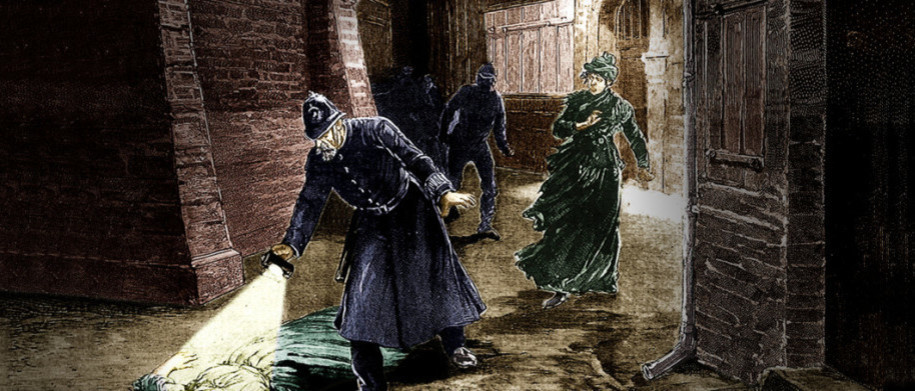Who was Jack the Ripper?
Posted on 11th January 2021
At 10.45 on the morning of 9 November 1888, the body of Mary Jane Kelly, a 25 year old prostitute of Irish descent was discovered in her lodgings at 13 Miller's Court, Whitechapel, by the man who had come to collect the rent - he was horrified at the sight that met his eyes: Mary lay naked upon her bed, her uterus and kidneys had been removed, her breasts cut off, her abdomen sliced open and its contents lain on the bed beside her, her face had been cut and disfigured beyond recognition, and the entire room was drenched in blood.
Thomas Bowyer, who had visited Mary's lodgings that morning to collect the 25 shillings she owed on the rent, told police that having knocked and received no reply he tried to open the door, but it appeared to be locked from the inside. He had then reached through a crack in the window to pull back a coat that was being used as a curtain. He was to later say he wished he'd never done so as in all his years serving as a soldier in India, he had never witnessed a sight like it, and it was to haunt him for the rest of his life.
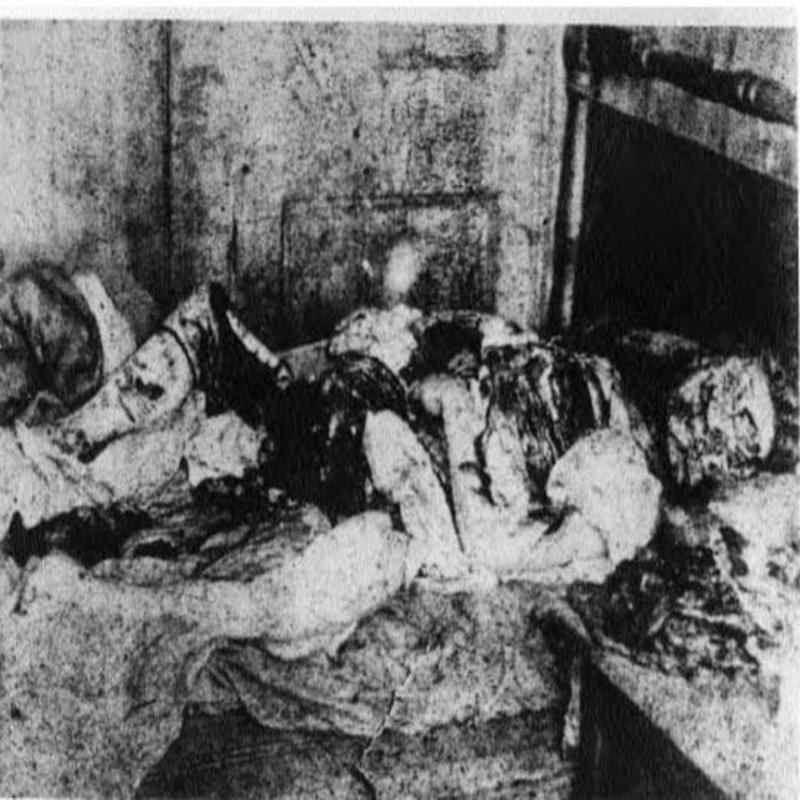
The police immediately concluded that Mary was the latest victim of the fearful Jack the Ripper unaware that with this gruesome crime the murder spree of the man who had terrorised London for months would come to an end.
Other serial killers since have been more prolific but few have been more notorious, and the notoriety is only increased by the fact that his crimes remain unsolved to this day. So, here I shall put the case against the most likely suspects but it is for the reader to decide who may or may not have been, Jack the Ripper? First however, there are certain factors that need to be taken into consideration:
All his victims, and there may have been as many as nine and not just the canonical five we are most familiar with, were known prostitutes and lived within one square mile of each other so the likelihood is that though they may not have been friends they would at least have known one another. If this is indeed the case, then the chances are that they knew the Ripper also.
His ability to quickly disappear into the dark, smog bound London night lends us to believe that he was relatively young and sprightly. Also, evading capture in an area crawling with police suggests that he knew the locality well and probably had lodgings nearby.
Witnesses who caught a glimpse of the Ripper described him as being of average height and stocky build with fair hair and a moustache. He was also said to be well-dressed but scruffy, a kind of shabby gentility much like a once wealthy man fallen upon hard times.
Four of the five pathologists who worked on the Ripper Murders declared he must have had varying degrees of anatomical knowledge. That he had either studied as a doctor or was at the very least a butcher.
All the women were either killed at the weekend or on a Bank Holiday which suggests that he was a single man in full-time employment with no family commitments.
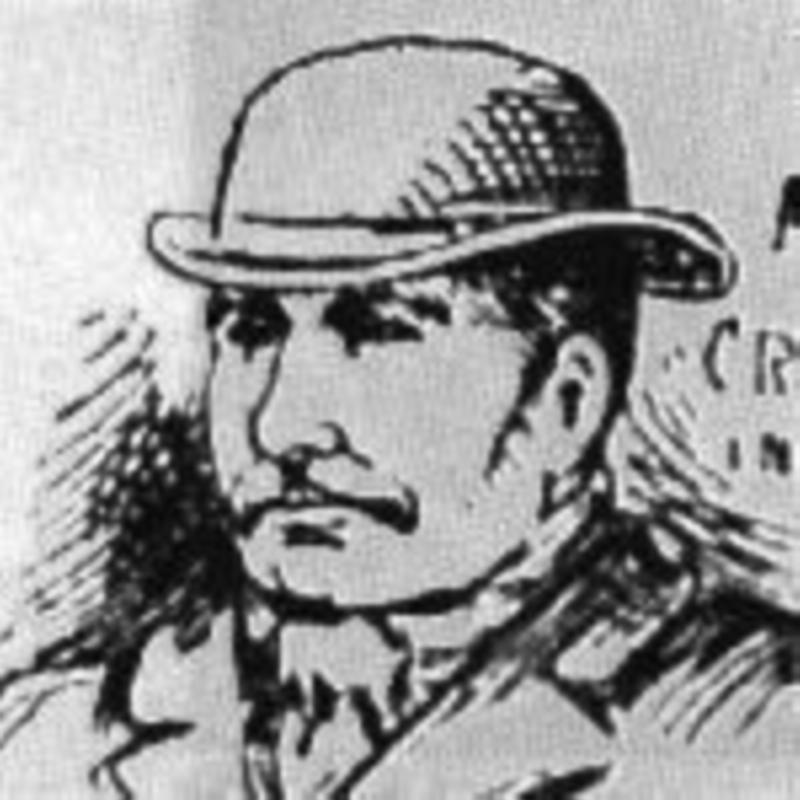
Joseph Barnett had been born and raised in Whitechapel and was the last known lover of Mary Kelly. He was by all accounts besotted with Mary and could not bear the thought of her giving herself over to other men and begged her to cease selling her body for money promising to support her through his job at Billingsgate Fish Market. In July 1888, however, he was dismissed from his job and lost his licence to work in the market after he was accused of theft, though no charges were ever brought. With no money coming in Mary immediately returned to prostitution to make ends meet.
Some have suggested that Barnett began killing prostitutes to deter Mary from returning to the streets, but this is pure conjecture. They did on 30 October, however, have a furious row at 13 Miller's Court that was heard by the neighbours, some of whom were to say that they thought it had turned violent. Barnett later stormed out.
It has been suggested that Mary was murdered in such a frenzied and vile way that the attack could only have been carried out by a spurned lover. The way her face was so horribly disfigured also indicates a desire on the part of the murderer to destroy any trace of attractiveness in his victim, and Mary was known to be very pretty, indeed.
The door to Mary's lodgings had also been locked and the windows were shut. The murderer therefore must have let himself out and locked the door behind him. Yet the door appeared to have been locked from the inside and Mary's key was found in her room - Barnett it was known had a key of his own. However, in the week before the murder Mary and Barnett had been seen in each other’s company and appeared to be on good terms. Indeed, he had even continued to send Mary money when he could.
Those witnesses who had briefly glimpsed the Ripper in the act described him as being around 5'7 inches tall, 30 years of age, with fair hair and a moustache. Barnett had been born in 1858, which would indeed have made him 30 years of age, and he was also of a similar height and had fair hair and a moustache. Barnett also fitted many aspects of the future FBI profile of Jack the Ripper. He was a white male, aged between 28 and 35, and he worked in a profession where the boning of fish would have allowed him to satisfy any violent tendencies he may have had. His father had also died when he was aged just 6, and a speech impediment would have led to some anger and frustration that might well have found expression in bouts of violence.
Despite all this Barnett was not considered a suspect by the police at the time, and there is no physical evidence to link him to the crimes. Also, is it plausible that he would carry out such terrible crimes simply to persuade his lover to change her ways?
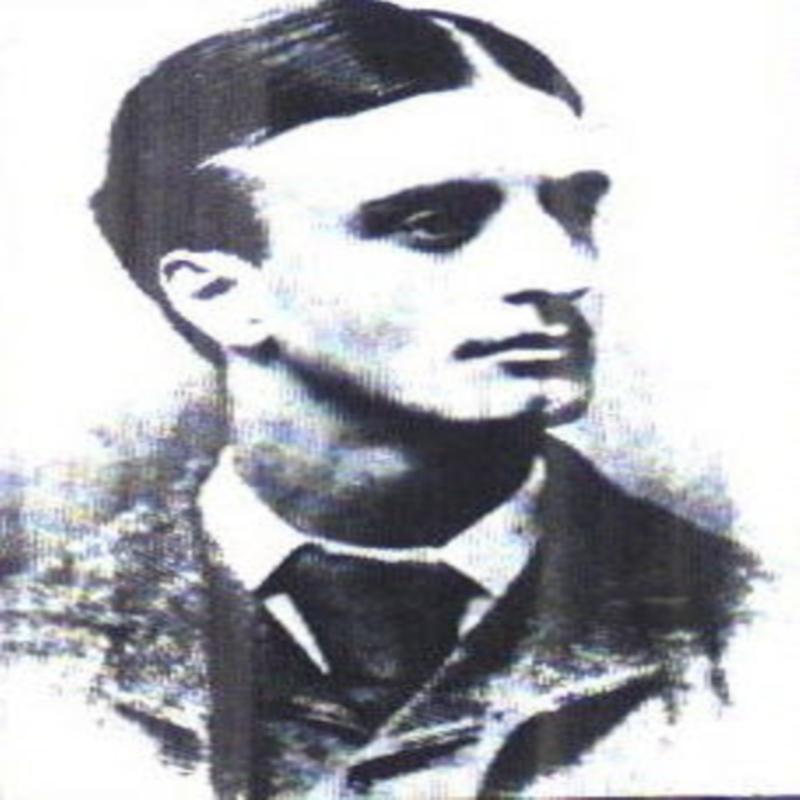
Montague John Druitt fitted the notion of the Gentleman Ripper.
He was the son of a physician educated at Winchester Public School and later Oxford University who but chose not to follow in his father's footsteps and instead trained as a barrister. He was also a noted sportsman.
To supplement his income as a barrister he also worked as a teacher in a Boys School but in the spring of 1888, he was dismissed from his post and though no formal reason was ever given for his dismissal it was rumoured that he was a homosexual and had been accused of molesting the boys in his care - there is little actual evidence for this, however.
On 30 December 1888, his body, weighed down with stones was dragged from the River Thames and the ensuing autopsy found that he had committed suicide and had been in the water for about a month, so he would have killed himself not long after the final Ripper murder.
Druitt certainly did not fit the physical description of the Ripper being tall, dark, and clean shaven, and ticked few of the boxes of the FBI profile. But his family believed him to be the Ripper, and so to a large extent did Inspector MacNaughten. In his famous Memorandum on the case, he wrote: "I have always held strong opinions regarding him and the more I think the matter over, the stronger these opinions become."
In his report to Scotland Yard, he elaborated further: "From private information I have there is little doubt that his family suspect him of being the Whitechapel murderer, and it is alleged that he was sexually insane."
Druitt however did not live in London but in Kent, though his Legal Chambers were close to where the crimes were committed. He was also not known to have had relationships with women and was reported to be uneasy in their presence.
The murders did cease after his death however and many believe that he killed himself out of guilt and remorse, that he could not live with what he had done to Mary Kelly. But his mother suffered from depression and in 1890, two years after her son's death, she was committed to a Lunatic Asylum. It is possible that depression and mental instability ran in the family, and again there is no physical evidence to link him to the crimes.
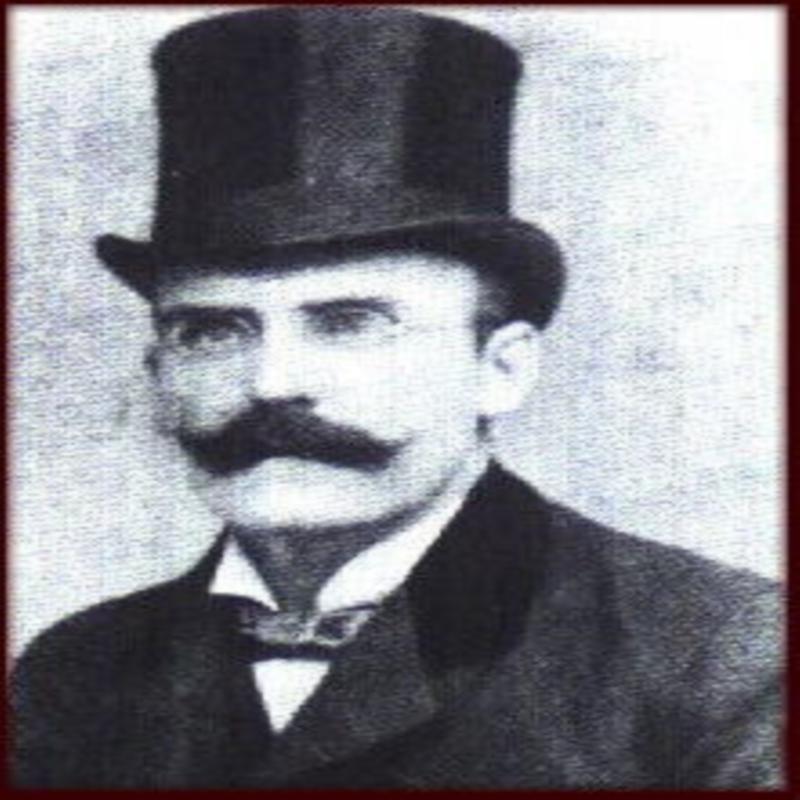
Dr Thomas Neill Cream had already murdered many times before Jack the Ripper even began his murder spree.
Though he was born in Scotland he was to spend much of his life in Canada where he graduated from medical school with honours, and it seemed as if a promising career as a doctor lay ahead of him. Instead, he chose to work as an abortionist and a seller of sham elixirs and many women were to die under his knife following botched operations but always on the move he never remained anywhere long enough to be charged with a crime.
In 1878, he moved to Chicago where he had an affair with one of his patients. When the husband found out, Cream decided to kill him. It appeared that he had got away with the murder when bizarrely, and for reasons that remain unexplained, he requested that the body be exhumed, and an autopsy be carried out. When it was found that the man had died of strychnine poisoning Cream was arrested, found guilty of murder, and sentenced to life imprisonment.
Prison records indicate that Cream served 10 years of his life sentence and was released on 31 July 1891. If this was indeed the case then he would still have been incarcerated at the time of the Ripper murders, but the Chicago Prison Authorities were notoriously corrupt and it is far from impossible that he bribed his way to an early release and by the autumn of 1891, Dr Cream was living in South London.
Most of his previous murders had been the result of botched operations and poisonings carried out to cover his tracks but now he began killing women because he enjoyed it. A regular client of prostitutes he poisoned two for no other reason than he could before going onto to poison two other women who were not prostitutes but with whom he was merely acquainted. He then threatened to blame his neighbour for the murders to extort money from him.
He frequently boasted of his knowledge of poison in the local Public Houses and appeared to display an in-depth knowledge of the Ripper murders, a topic he would speak of often and with relish. Unfortunately for Dr Cream one of the people to whom he boasted of his flair for poison was a Police-Sargeant who suspicious that there was more to what he said than just empty words decided to investigate further and when it was discovered that he did indeed know the women who had been killed and aware of his previous convictions he was arrested and charged with murder. Found guilty he was sentenced to death. His last words on the scaffold were "I am Jack th."
His apparent ‘death bed’ confession is the only real connection between Dr Cream and the Jack the Ripper murders however, for whilst he may have had the medical knowledge that has commonly been ascribed to the Ripper so also might a competent butcher or fishmonger. There is also no evidence that he was anything but in prison in America at the time of the murders and he certainly did not fit the physical description. He was though a known murderer of women, though his preferred method had always been poison.
William Henry Bury first became a suspect in the Ripper murders on the other side of the Atlantic when the New York Times drew comparisons between the murder of his wife and that of Polly Anne Nichols, one of the Ripper's victims.
Bury was living with his wife Ellen in the East End of London at the time of the Ripper murders before moving to Dundee in Scotland soon after they ended, and the police took the possibility he might be the Ripper seriously enough to dispatch Inspector Frederick Abberline to Scotland to investigate further. He discovered that whilst in London Bury had lived off his wife's earnings as a prostitute and that he would have been familiar with many of the other prostitutes in the area including possibly the Ripper's victims. Also, scrawled on the front door of his house was the name Jack the Ripper, though whether this was done by Bury himself or a local accuser is unknown.
Bury would have been 29 years of age at the time of the Ripper murders and he also fitted the Ripper's description in many other respects having a moustache and being short, stocky, and fair. He was also known to have had a troubled childhood, was prone to rages, and was known to carry a knife. Inspector Abberline remained unconvinced however, reporting back to Scotland Yard that he was not worthy of further consideration.
William Bury was hanged for the murder of his wife in April 1889. He never confessed to being Jack the Ripper.
Aaron Kosminsky was a Polish Jew who before he went insane worked as a barber in the Whitechapel area. He was mentioned as a suspect in the MacNaughten Memorandum where he wrote that "he had a great hatred of women and homicidal tendencies."
He was a bizarre character no doubt who would often eat his food off the ground whilst howling like a dog, would shout at passers-by in a garbled, unintelligible combination of Polish and Yiddish (he spoke no English) and refused to even wash let alone bathe. But there was little history of violence in his background.
The only witness who got a clear view of Jack the Ripper identified Kosminsky as the murderer, but it was not possible to bring a prosecution because he refused to testify against a fellow Jew.
Kosminsky was committed to Colney Hatch Lunatic Asylum in February 1891 but there is some doubt whether the Kosminsky committed to the asylum is the same one who is mentioned in the Memorandum for MacNaughten states that Kosminsky died soon after the murders ended, whilst the Kosminsky in the asylum did not die until 1919. His name was also spelt slightly differently as Kosminski.
It has been suggested that MacNaughten knew that Kosminsky was Jack the Ripper and had, fearing anti-Semitic riots in the East End, lied about his death to prevent a prosecution and the truth from ever being revealed. He then had him committed to the asylum and away from the public gaze.
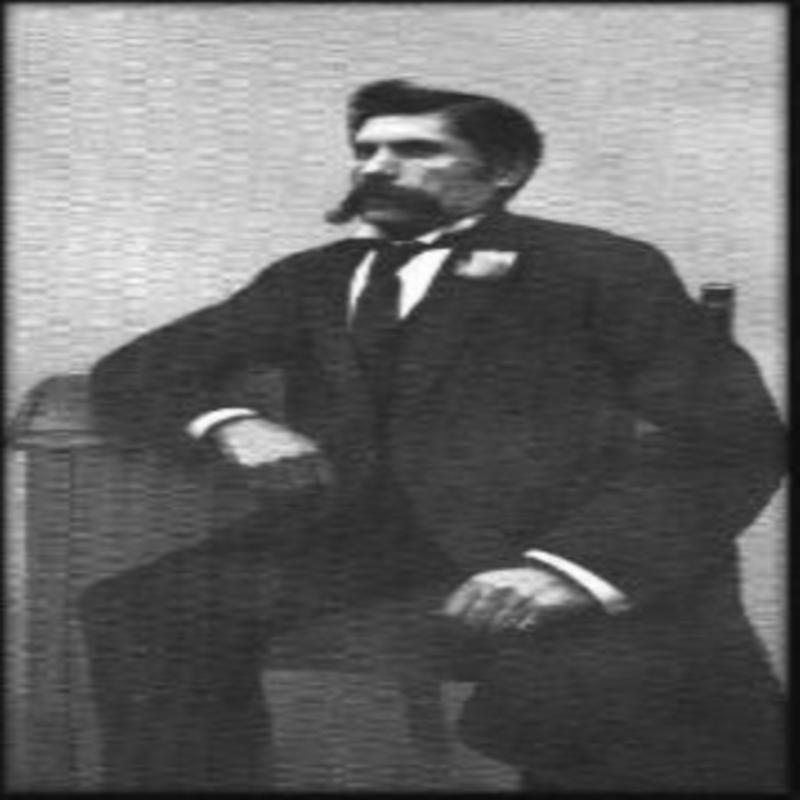
George Chapman, or Severin Antionovich Klosowski, arrived in England from Poland in 1888, just a few months before the first Ripper murder. Prior to his arrival in England, he had studied as a surgeon in Russia.
Very few people interviewed regarding Chapman had a good word to say for him and he appears to have been a very sinister character. He was certainly a misogynist, a bigamist, and prone to extreme bouts of violence. He settled in the Whitechapel area where he found work as a barber and not long after married, even though he still had a wife back in Poland. She was furious when she found out and travelled to London to confront her husband but soon fled back to Poland again when he tried to strangle her. In early 1891, he journeyed to New Jersey in America with his then wife Bessie Taylor. When he returned to London in 1895, Bessie was no longer with him and her whereabouts were never traced.
He soon opened his own Barbershop and seems to have been doing rather well, certainly well enough to attract a new wife, Mary Spink. Their relationship though was a fractious one and he regularly abused and beat her in public. Tired of her incessant nagging, as he saw it, he poisoned her and as she lay dying, he was overheard to refer to her as Polly, the name of the Ripper's first victim.
On 20 March 1903, he was arrested for the murder of Mary Spink and his last wife Maud Marsh. Upon hearing of the news Inspector Abberline remarked: "At last we have him, Jack the Ripper. The date of his arrival in London coincides with the murders in Whitechapel and the murders ceased when he left to go to America, where similar murders began to be perpetrated there. The fact that he studied surgery in Russia also coincides with the fact that the murders were carried out by an expert surgeon."
Chapman's violent nature and his love of knives convinced Abberline that he was the Ripper. He would however only have been 23 years of age at the time of the murders, considerably younger than the Ripper was believed to have been but in many other respects he fitted the physical description.
George Chapman was hanged at Wandsworth Prison on 7 April 1903, for the murder of his wives. He was never questioned about any possible involvement in the Jack the Ripper murders.
John Pizer was a Polish Jew who was also known as "Leather Apron."
He lived in Whitechapel where he worked as a bootmaker, hence his nickname and became a suspect in the Ripper murders when a blood-soaked leather apron similar to the one he wore was found discarded near the scene of one of the murders.
The Chairman of the Whitechapel Vigilance Committee, George Lusk, who had recently been sent the notorious "From Hell" Letter along with a half a liver whipped public opinion into a frenzy over a killer so savage that he needed an apron to soak up all the blood.
Pizer, who was well known locally for always wearing his leather apron was arrested and was to be one of only two men ever to be charged with the murders but was released soon after when he was able to prove that he was in the presence of a Police Officer during one of the murders.
Though he was an abusive and ill-tempered man who regularly consorted with prostitutes there was nothing to link him with the murders other than the leather apron which was later proved to belong to one of the victims.
Pizer was later to successfully sue the City of London Police for wrongful arrest.
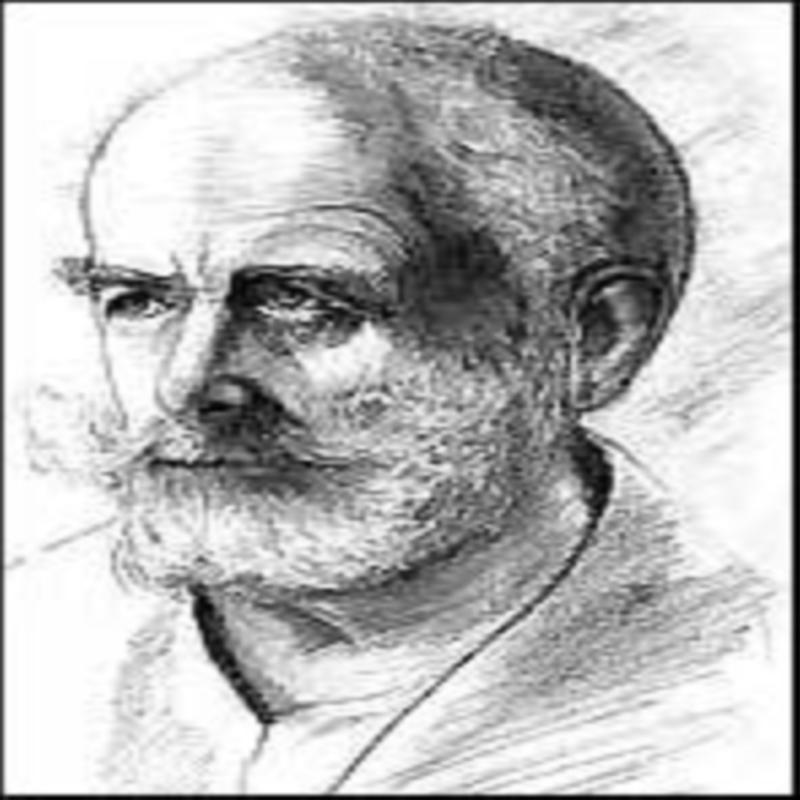
Francis Tumblety is one of the more colourful characters to be implicated in the Jack the Ripper murders.
A flamboyant homosexual of Irish descent from Rochester New York, he was a quack doctor, a seller of fake herbal remedies, a forger, and a distributor of pornographic literature. He had also been arrested as a suspect in the assassination of President Abraham Lincoln in 1865, though later released without charge.
His hobby, if it can be called that, was collecting female uteri, of which he had a great many. He also had an intense hatred of women. A certain Colonel Dunham, who had been a dinner guest of Tumblety's, recorded how when he asked why there were no women present his "face turned as black as thunder." He then went on to describe women as cattle and lecture his guests about the wickedness of womankind and denouncing them all as the Fallen Ones. He was to later explain that his contempt for women derived from experience as a physician and husband. He then proceeded to show his guests around his own museum of pickled female body parts.
Tumblety, who had already been responsible for the deaths of several women who had come to him with medical complaints or to have their pregnancy aborted, was always on the move, and he would often travel across the Atlantic to escape the consequences of some scam or other he had been involved in. At the time of the Whitechapel murders he was residing in the East End not far from where the actual crimes were committed and had been trying to purchase uteri from local hospitals but with little success. He also carried a medical bag like the one that the Ripper was rumoured to possess.
On 8 November 1888, he was arrested for gross indecency with a young man which, would seem to preclude him from being able to have carried out the Mary Kelly murder on the 9th, but there is no evidence that he was under lock and key at this time. The Police certainly suspected him of having committed something far worse than illegal, if consensual, sexual dalliances with young men and on 12 November he was arrested and charged with the Whitechapel murders. His trial was postponed until December, and he was unbelievably granted bail. On 24 November, he fled London and took ship back to America.
Scotland Yard immediately contacted their American counterparts, and a watch was put on all ports but Tumblety managed to elude these however, and slipped back into New York unnoticed. In the meantime, Inspector Andrews was dispatched to America to help track him down. He was eventually traced by the New York Police and placed under arrest, but Scotland Yard could not produce sufficient evidence for extradition proceedings to go ahead and so Tumblety was released without charge disappearing back into the murk from which he had emerged.
The Tumblety affair was widely reported in the American press but hushed up as best as could be back in Britain. It is possible that Scotland Yard were embarrassed at having let Jack the Ripper slip through their grasp.
Was Francis Tumblety Jack the Ripper? There are certain factors that cast doubt upon the possibility. Firstly, he was a liar, a braggart, and an avid self-publicist. Could he have kept the secret that he was world's most famous serial killer even as he lay on his death bed? He was also 55 years of age at the time of the Ripper murders considerably older than the killer was commonly believed to be and operating in the dark, dangerous, fog-bound and unfamiliar streets of Whitechapel he would needed to have been very light on his feet or very lucky to escape detection.
Agility was unlikely in a portly man of his age, and it is also unusual for a homosexual to manifest his fury in violent assaults upon women, though it has been suggested that the women were attacked by him to obtain the uteruses that had been denied him by more legitimate means.
Michael Ostrog was a Russian born con-man and habitual criminal who was named in the MacNaughten Memorandum as a possible suspect in the Whitechapel murders. Indeed, MacNaughten describes him as the mad Russian doctor who was a homicidal maniac and habitually cruel to women.
There appears to be little evidence against him other than the fact that he regularly carried knives and surgical instruments about his person, and we do not even have any proof that he was even in Whitechapel at the time of the murders. There is also nothing to indicate that in his life of petty crime he had a tendency towards violence. Inspector MacNaughten clearly thought otherwise, however.
Thomas Haynes Cutbush was the close relative of a senior Metropolitan Police Officer who is known to have contracted venereal disease from an encounter he had with a prostitute in early 1888, the effects of which seriously corroded his brain.
On 15 March 1891, he was sentenced to be remanded at Lambeth Infirmary as a wandering lunatic but later escaped and stabbed the first two women he encountered. He was quickly recaptured and transferred to the more secure Broadmoor Lunatic Asylum. MacNaughten was known to have later destroyed documentation relating to the Cutbush case and this has made many people think he did so to protect a fellow senior member of the Force whose son may have been the notorious serial killer; but though his health had been ruined by his association with prostitutes, that he was insane and had attacked women with a knife, there is no evidence as such to link him with the Jack the Ripper murders.

Prince Albert Victor, Duke of Clarence, the eldest son of Edward, Prince of Wales and therefore heir presumptive to the throne was a young man some described as simple and affable others as retarded or even mentally unstable in the years since the Ripper murders has become the focus of a few often fanciful conspiracy theories regarding his involvement in the crimes. The main one being that he contracted syphilis from a prostitute that made him insane and drove him to commit the murders, or, at least have the murders carried out on his behalf to cover up the fact of a liaison that had resulted in the birth of an illegitimate child and his secret marriage to a commoner.
This theory does not tie in with his alleged homosexuality however, and the rumour that he had been present at the Cleveland Street Male Brothel when it had been raided by the police, and where several prominent Victorian gentlemen had been arrested.
Prince Albert Victor was unquestionably a rum character who enjoyed the seedier side of life and was a frequent visitor to the East End, but his preferred company appears to have been that of young men. There is little, if any, physical evidence to link him to the Ripper murders. Fortunately for the Royal Family perhaps, he died soon after in 1892.
Those mentioned so far have for many years been the main suspects in the Whitechapel Murders and one of them is likely to have been Jack the Ripper, but there are others who were suspected both at the time and since:
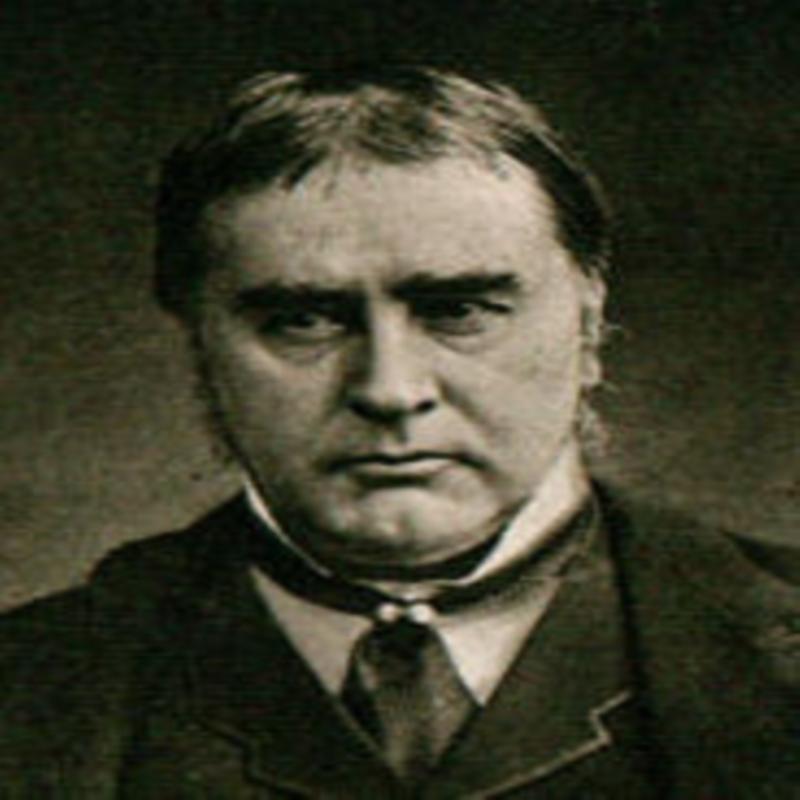
Sir William Withey Gull was one of Queen Victoria's personal physicians and is believed by those who support the conspiracy theories surrounding Prince Albert Victor to have carried out the murders on his behalf.
He was however, 71 years old at the time of the murders. in ill-health and in no position to be traipsing the streets of a fog bound London in the dead of night hunting for prostitutes to kill. Even so, the fact that he was a senior Freemason (and all the suspicion that surrounds them) and died like the prince soon after the final murder has lent credence to the claims.
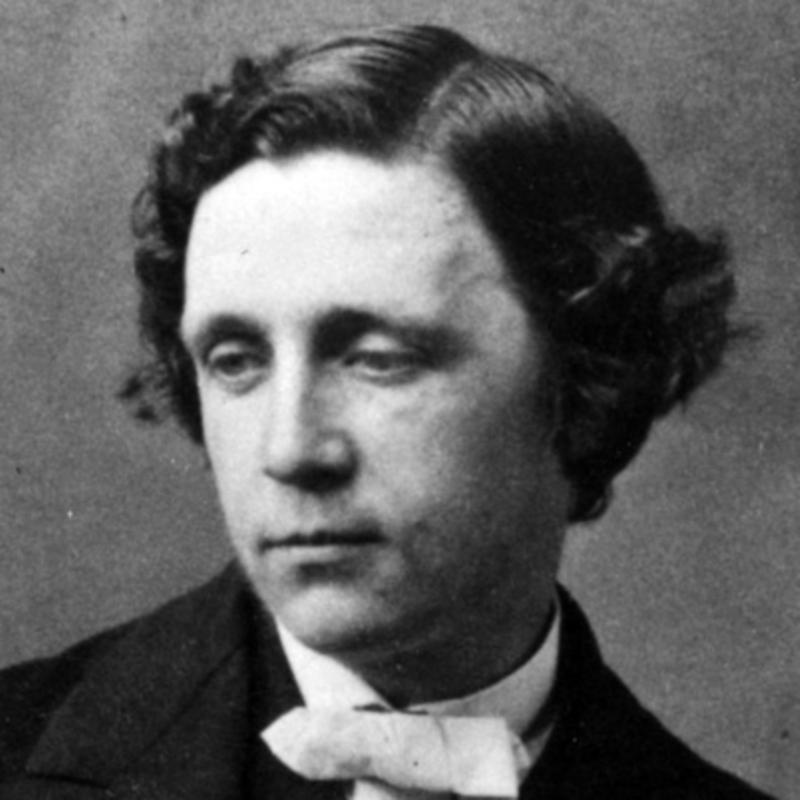
Lewis Carroll, or Charles Lutwidge Dodgson, the author of Alice in Wonderland is believed by some to have placed in his sequel Alice through the Looking Glass coded anagrams referring to his being Jack the Ripper.
If so, then I might suggest it marks a rare literary failure on his part providing neither proof nor clarity.
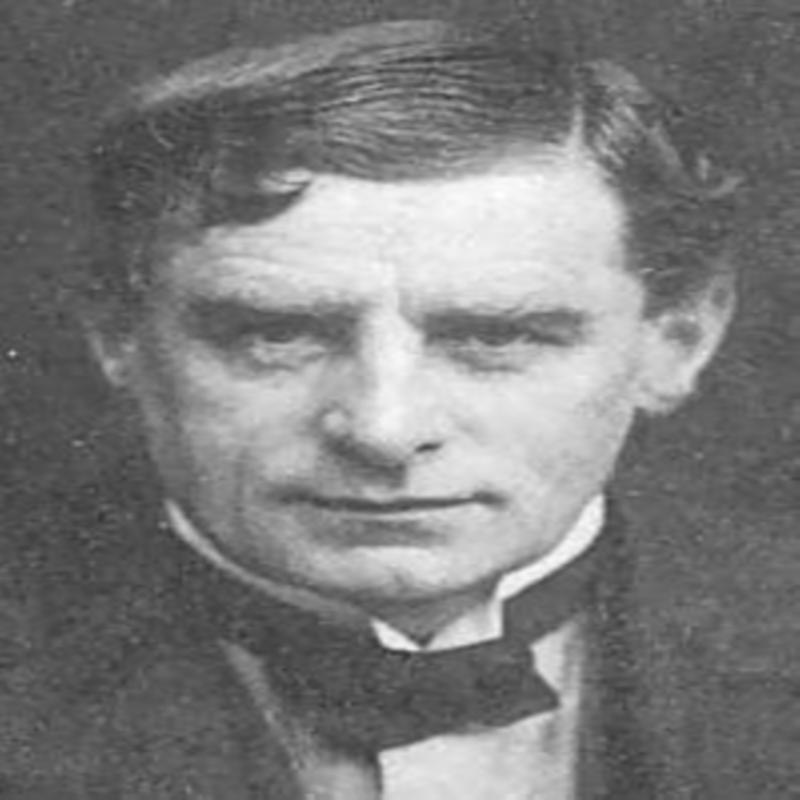
The artist Walter Sickert produced many paintings that appear to portray the Ripper's victims and that he had an enduring fascination with the case is well known.
Indeed, he would often discuss the murders with his friend, Lewis Carroll in the cafes and restaurants where they dined together. But such conversations were not unusual at the time. Victorians were fascinated by the possible identity of Jack the Ripper and were to continue to be so for many years.
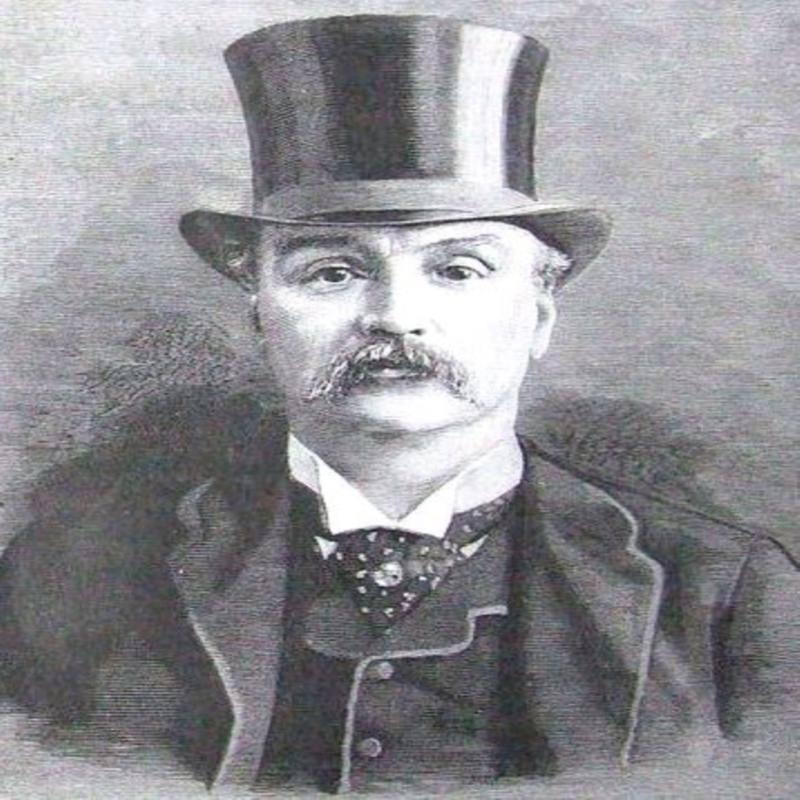
James Maybrick was a merchant from Liverpool who regularly visited London and confessed to being Jack the Ripper in his diary. The validity of the diary has never been confirmed however and remains disputed to this day. He also died less than a year after the final Ripper murder with his wife later convicted of having poisoned him.
George Hutchinson went to the police claiming to have been a witness to events leading up to the murder of Mary Kelly, and he provided a detailed account of what he saw:
"At about 2 am I was coming by Thrawl Street and saw the murdered woman, Kelly. And she said to me Hutchinson will you lend me sixpence. I said I can't I have spent all my money going down to Romford. She said, I must go and find some money. She went away, a man coming in the opposite direction tapped her on the shoulder and said something to her, they both burst out laughing and I heard her say, alright then. And the man said you will be alright for what I have told you. He also had a kind of parcel in his left hand. I stood against the lamp of the Queen's Head Public House and watched him. They both then came past me, and the man hid down his head with his hat over his eyes. I stooped down and looked him in the face. He looked at me stern. They both then went into Dorset Street, and I followed them. They stood at the corner for about three minutes. He said something to her then she said alright my dear come along you will be comfortable. He then gave her a kiss. She said she had lost her handkerchief. He then pulled his handkerchief, a red one, and gave it to her. They both went up the court together. I then went to the court to see if I could see them, but I could not. I stood there for about three quarters of an hour, but they did not come out, so I went away."
Were these truly the last moments of Mary Jane Kelly? Was the man he describes Jack the Ripper? Was George Hutchinson, Jack the Ripper? Inspector Abberline certainly thought so, he wrote:
"I have interrogated him this evening and I am of the opinion that his statement is true. He informed me that he had occasionally given the deceased a few shillings. He was to say that he was surprised to see a man so well dressed in her company."
Hutchinson described a man who was of average height with a pale complexion and a wispy moustache. It fitted previous descriptions, but he also said he was well dressed in a long dark coat, light waistcoat and a dark felt hat. That he was very sharp in his step and was of Jewish appearance.
So detailed was the information that Hutchinson could provide on Mary Kelly that for a time the police suspected him of the murder. After all, he was a known stalker of women and seemed particularly obsessed with Mary Kelly. But he seemed to be trying to deliberately implicate himself in the murder.
He was later to confess that he was Jack the Ripper but there was no physical evidence to link him with the crimes and no one, except for Inspector Abberline, took him terribly seriously.
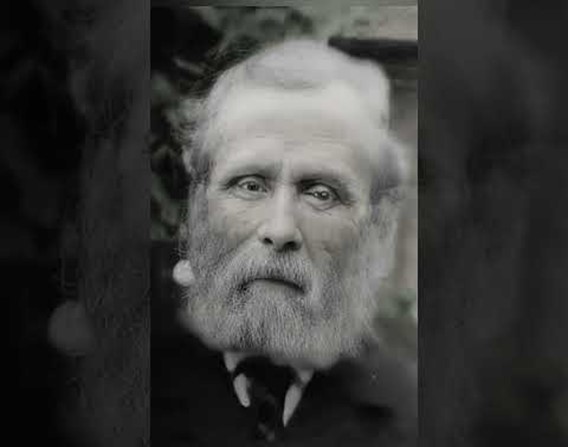
Charles Allen Lechmere was the man who discovered the body of the Ripper’s second victim Polly Anne Nichols. He later told the Inquest that he was walking down Buck’s Row. Whitechapel, on his way to work at around 3.40 in the morning when he saw in the darkness what appeared to be the body of a woman slumped by a gateway. He wasn’t the only man present however, Robert Paul who took the same route to work had been walking some distance behind. According to press reports he described how he had seen Lechmere crouched over the body of the victim but later told the Inquest that he had seen him standing in the middle of the road.
Lechmere together with Paul pulled down Polly’s skirts which were up around her waist and then decided that as they were both late for work, they would inform the first police constable they encountered of their discovery. This duty fell to Lechmere who told PC Jonas Mizen, “You are wanted in Buck’s Row by a policeman, a woman is lying there.”
Only recently has Lechmere become a suspect in the Ripper murders.
He was 39 years of age, a father of 11 children who lived with his mother. He worked as a carman delivering meat for Pickford and Sons in Broad Street 40 minutes’ walk from his home. His route to work took him past the location of three of the Ripper’s murders and of another not commonly associated with him. The murders were committed around the time he would be on his daily commute, so it is plausible that he could have been the perpetrator. However, the remaining two murders in the canonical five took place further away and on a Saturday his day off work.
Lechmere also provided a false name at the Inquest referring to himself as Charles Cross, the name of his stepfather when he was a child. It has been suggested that he was trying to avoid police detection and attending the Inquest. However, this was the name he had been using some twenty years for employment purposes and he did provide his correct address. Also, the other eyewitness Robert Paul did not finally provide evidence to the Inquest until two weeks after Lechmere.
He had also lied to PC Mizen about there being another police constable at the scene. But had he not lied PC Mizen would almost certainly have detained him meaning he would have missed work which could have cost him his job.
Although she was strangled Polly Nichols had also had her throat cut yet there was no discernible blood on Lechmere’s clothing. This indicates that the wound was freshly made and had yet to bleed out. There are no side streets off Buck’s Row so it would have been difficult for anyone to flee the scene or indeed remain hidden.
Charles Edward Lechmere who was never a suspect in the police investigation into the Ripper murders died in 1920 aged 71 having lived it appears an almost blameless life,
Tagged as: Victorian
Share this post:





